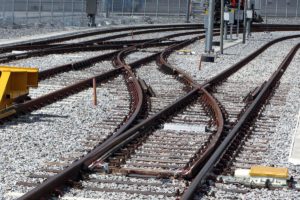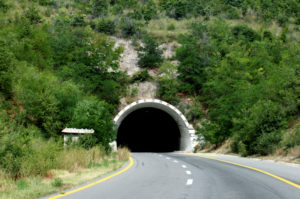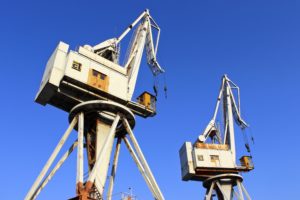 “When the first attempts at systematic weather forecasting were made, one idea was to look back through the records for a day where the weather was much the same as the day when the forecast was being made. The assumption was that the weather on the following day would be the same as the weather on the following day in the historical past. But surprising events are always occurring to disrupt this sort of forecasting.” (from Len Fisher’s talk on the ABC’s Okham’s Razor, 11 May 2016.
“When the first attempts at systematic weather forecasting were made, one idea was to look back through the records for a day where the weather was much the same as the day when the forecast was being made. The assumption was that the weather on the following day would be the same as the weather on the following day in the historical past. But surprising events are always occurring to disrupt this sort of forecasting.” (from Len Fisher’s talk on the ABC’s Okham’s Razor, 11 May 2016.
We laugh now at the absurdity of these first weather forecasters. However, many in the stock market still analyse charts of past stock prices to predict future changes (this is a bit more complicated, perhaps, but it still seeks to find answers to the future from the past) At least, if you get it wrong with stock prices, you lose a bit of money but can try again tomorrow. But if you apply these ‘looking back’ ideas to future infrastructure investment decisions that will impact our communities for decades, that is a very different matter.
Thirty years ago when I became interested in infrastructure planning, it was common to take a rising trend and simply extrapolate it and although it often resulted in major oversupply, we still did it. And we are still doing it! We just use more complicated algorithms.
But if not extrapolation of the past, what techniques are available for anticipating a changing future?

Switch (courtesy Falk2)
If we have information that can lead to better decisions, can we fail to act? Can we excuse ourselves with “it’s their job”, “not my responsibility”, “I don’t want to be involved”.
Philippa Foot devised a thought experiment in 1967, routinely called the “Trolley Problem”. The experiment involves a train (trolley) heading toward 5 workers. The train is a runaway and all 5 workers will certainly be killed if nothing is done. There is a side track with only one worker and you are in the right place at the right time to make a decision. You can activate the rail switch, diverting the train and resulting in a single certain death. Or not. There is no time to alert the workers, or gain assistance; the train can’t be stopped.
As a tool to teach ethics this particular experiment is deceptively simple, should I sacrifice 1 to save 5? It does however raise numerous questions, “am I obliged to act?”, “do I have a duty?”, “is interfering wrong?” “do I act morally or ethically?”, “do I act for the greater good, the good of the people involved, or for myself?”
This dilemma is very long lived and has captured the imagination of the professionals and public. There are many variations – is it Ok to stop the train by pushing someone in front of it? What if that person was responsible for the runaway train? What if the workers could be saved by sacrificing a bystander, or a loved-one?
When anyone is faced with making a decision at a switch they can make a moral choice, an ethical choice, a popular choice, and when making that choice they can include longer time frames, wider consequences, how the action will make them feel, how others will think of them.
Questions today: When it comes to infrastructure decision making, when our decision takers are standing at the switch, how do we know if we should contribute to the conversation? When would we join in if we do, and with what level of action?
 Recently at a workshop of asset managers I suggested that the role of Strategic Asset Managers in today’s environment will be to anticipate the changes that are affecting their organisations policies and be ready to address them. I asked them to come along prepared to discuss the key trends affecting their organisation and what they were planning to do about it.
Recently at a workshop of asset managers I suggested that the role of Strategic Asset Managers in today’s environment will be to anticipate the changes that are affecting their organisations policies and be ready to address them. I asked them to come along prepared to discuss the key trends affecting their organisation and what they were planning to do about it.
The key trend identified was diminishing or uncertain funding. No surprises there.
What I found interesting, however, was the way that almost all of them were coping with this situation. It was to place a greater focus on the ‘customer experience’ and to broaden the scope of their activities. A university asset manager said that they were seeking to provide staff, students and researchers with ‘desirable experiences’. The airport manager was looking to extend the airport facilities to attract not only passengers and those who came to greet or see them off, but people who would come to the airport for the events or activities it provided, rather than for the intention of flying. The asset manager from the electricity authority said that they now saw themselves, not in the electricity business but in the energy business. He too, saw the need to focus on customer experience. In fact, he recognised that in this new environment that ‘asset management’ and ‘marketing’ had to come a lot closer, for they had a common goal.
Infrastructure management and marketing! An interesting combination.
So my question for today is: Is this the way you see infrastructure moving?
 I am often told that I should be targetting ‘Talking Infrastructure’ at the politicians because they are the real decision makers. But are they?
I am often told that I should be targetting ‘Talking Infrastructure’ at the politicians because they are the real decision makers. But are they?
Politicians are like a jury. The lawyers make their best case and the jury chooses between them. The result depends on the skill of the lawyers who have to examine the facts before them, assess their validity, make a case and then present it as persuasively as they can. Now the lawyers may not have all the facts, or the jury may be influenced by matters other than the facts – the look of the defendant, perhaps. It may be that the guilty go free, or the innocent are convicted. No reasonable person could think that this is ‘fair’ or ‘right’, but it is the way we discover the truth under the legal system we have. Importantly the jury is chosen deliberately for its representativeness, not analytical skills. To get better results from our jury system we therefore work on improving the system – and the quality of the lawyers who analyse and present the information.
Politicians are like a jury. Infrastructure analysts examine the issues, collect data, analyse it, make a case and present it. They are like the lawyers. The politicians then have to take a stand. The analysts MAKE the case. The politicians TAKE a stand. That is why I refer to the analysts as ‘infrastructure decision MAKERS’ and the politicians as ‘infrastructure decision TAKERS’. Semantics perhaps, but a useful distinction.
It is also why I am targetting this Talking Infrastructure Blog at the analysts and not at the politicians. It is the analysts who can make a difference.
Whether a proposal ‘gets up’ depends on
- the merits of the proposal itself,
- the skill with which it is presented, and
- the match between it and the needs of the politicians
All of these (yes, even the last) are within the capacity of the analyst – the infrastructure decision maker – to improve. End of manifesto!
Question for today: Do you believe we need to better understand the needs of politicians. Why or why not?
 In his post on August 12, Mark Neasbey of the ACVM spoke about the infrastructure decisions we make when we don’t think we are making any. Dangerous! If you haven’t read it yet, it’s worth it! Click here. And here is another example of unconscious decision making.
In his post on August 12, Mark Neasbey of the ACVM spoke about the infrastructure decisions we make when we don’t think we are making any. Dangerous! If you haven’t read it yet, it’s worth it! Click here. And here is another example of unconscious decision making.
At his last school, surplus capacity was up around 45-50% and the school principal approved the use of one of the vacant classrooms as a drop in centre for parents and carers.
Now he was also on the council for another school, one his own children attended. This school was in a growth area and had no surplus capacity, but when he spoke of his drop-in centre, the other council members thought it a good idea and since school extensions were being designed at the time, the second school agitated to have a drop in centre designed into the new building.
The designer liked the idea and in the next school design he was involved in, he automatically included a drop in centre.
Now what had begun as a good use of surplus capacity, a “one off”, had become a new standard. Who approved the ‘new standard’? In all likelihood, no-one. When was a conscious decision on the new standard taken? In all likelihood, never. Was the corporate level (in this case the Education Department) even aware of the change? In all likelihood, not at all!
This is infrastructure or service level creep. Everyone defends it. Why wouldn’t they? A better service at no cost is what we should all aim at. But what is ‘no cost’ when we already have surplus infrastructure, becomes very costly indeed when the extra space is being deliberately built in.
This is not to argue against drop-in centres, per se. They can be a great addition to a school and to the community. But rather to suggest that the decisions be taken advisedly. To do this we must first be aware of it!
Question: What examples of infrastructure creep (or service level creep) can you think of?
 Jeff Roorda suggested this provocation. I wrote it, so don’t blame him! If you would like to submit a provocation for posting – keep it under 400 words and no more than 2 arguments. (i.e. leave something for someone else to say!) To set up a new provocation, email your suggestions to me at penny@talkinginfrastructure.com
Jeff Roorda suggested this provocation. I wrote it, so don’t blame him! If you would like to submit a provocation for posting – keep it under 400 words and no more than 2 arguments. (i.e. leave something for someone else to say!) To set up a new provocation, email your suggestions to me at penny@talkinginfrastructure.com
Or leave a comment on this one!
For years we have acted as if we could tax our way out of an infrastructure deficit if only they (the Government of your choice) would have the wisdom and courage to do it. That is why so much effort has been put into calculating ‘backlogs’. But is it true that we can fix the problem with more money?
The pro side: Yes, if we are prepared to pay for it by forgoing personal consumption (ie pay more tax or more rates) or by reducing other government expenditures. However, without some reduction in the total renewal bill what we have to go without might be rather painful. But would this clear the backlog?
The con side: No, for just as work expands to fill the time available (Parkinson’s Law), the infrastructure deficit or backlog expands to meet the money being spent on it! The clue is in the definition “The term Infrastructure Backlog refers to the total amount or value of renewal works that need to be undertaken to bring a Council’s (or other entity’s) asset stock up to an acceptable standard” source LGMA Knowledge Base. Consider the key word ‘acceptable’. Think back to when you were young, your funds were low and an ‘old bomb’ was quite acceptable (and certainly better than the bus!). But what did you do when you started to earn a decent income? Now it wasn’t ‘acceptable’ any more, so you upgraded. And that is what we all do. ‘Acceptable’ is a relative term. The more we spend on infrastructure, the higher our expectations and the higher the minimum ‘acceptable’ level. Whenever I hear that our roads or other assets are in poor condition, I think ‘relative to what?’ Spending more money to reduce the deficit is thus like a dog chasing its tail. And will be equally unsuccessful.
Your views?
 With monetary policy now so ineffective (bank rates are as low as they have ever been, in some countries negative, and yet they are not stimulating investment and spending) countries are increasingly looking to fiscal policy – that is direct spending by Governments. The expenditure of choice is infrastructure, and government infrastructure proposals are usually well received by the electorate because they are seen as creating jobs.
With monetary policy now so ineffective (bank rates are as low as they have ever been, in some countries negative, and yet they are not stimulating investment and spending) countries are increasingly looking to fiscal policy – that is direct spending by Governments. The expenditure of choice is infrastructure, and government infrastructure proposals are usually well received by the electorate because they are seen as creating jobs.
But proposals are normally vague on exactly what type of infrastructure spending is in mind, and the employment benefits of spending are often hyped up, so here are a few facts to bear in mind.
FACT: Out of every dollar spent in Australia, some proportion will go overseas in the form of imports. Some years ago, a government industrial economics report estimated that:
Maintenance generates 25% more employment than house construction and from 50% to 100% more employment than engineering construction. This is because:
- Maintenance is highly labour intensive, therefore there is little leakage of funds overseas to pay for imported elements
- House construction spending has a higher proportion of imports
- Engineering construction (i.e. infrastructure), with its specialised equipment and materials has an even higher proportion of imports.
FACT: It is not infrastructure spending specifically that creates jobs but ANY government spending. Some types of spending, as indicated above, will create more jobs than others (and engineering construction such as infrastructure is on the low end of job creation).
FACT: Just as putting money into the economy will stimulate job growth, it is also true that taking money out of the economy, e.g. by taxing us to pay for the infrastructure, or reducing other government spending for the same purpose, will reduce job growth.
FACT: Low income earners spend more of any dollars they earn than high income earners. So if we find the money for infrastructure by increasing taxes or reducing other spending on low income earners (which is what is happening at the moment) and we then spend that money on high income earners in infrastructure industries, this will itself reduce jobs rather than creating them.
So is infrastructure spending the jobs panacea so many believe it to be?
 In this post, Geoff Webb picks up on the question of infrastructure access.
In this post, Geoff Webb picks up on the question of infrastructure access.
The concept of ‘universal service provision’ stands in stark contrast to the ‘user pays’ model which is so often cited as a fair method of delivering services to the community, but is it?
Australians have long taken pride in being considered a fairly egalitarian society with an attitude of a fair-go for all. For many years, this was reflected in public policy and in the provision of essential infrastructure to all Australians, whether they be located in major cities and urban areas or in remote and isolated locations.
The history of telephone connection fees in Australia exemplifies the point, where actual costs for individual connections could be several orders of magnitude higher for a connection in the bush compared to connection in town, but a standard connection fee was charged for both. The community at large was, typically, fairly accepting of the idea that service charges, as long as they seemed reasonable, paid by the high number of users in the major metropolitan centres would effectively subsidise the relatively low numbers of remote and isolated services.
While critical infrastructure ownership and operation remained in government hands, Read More →
 Today’s post is by Mark Neasbey of the Australian Centre for Value Management
Today’s post is by Mark Neasbey of the Australian Centre for Value Management
We’ve all heard the line, usually around election cycles “crime is a concern to the community, crime rates are getting worse under this government – we can do better and we’ll put more police out there…blah, blah blah”. The proposal is never costed but always described as affordable and “there’ll be no tax increases to pay for this…blah, blah, blah”.
The extra police need somewhere to work – so we need more police stations. They need vehicles to respond to incidents and do their follow-up interviews etc. So we’ll need to buy more cars for them as well. So we’ve already locked-in some infrastructure commitments just bydeciding to employ more police. Well, Well, of course, the extra police are successful in arresting more suspects – that’s what you’ve employed them to do. These additional suspects need to be brought to justice. That means more appearances before magistrates and judges. But to get there they first must have legal representation and also more prosecutors – so the Director of Public Prosecutions needs more staff and most likely also needs more offices and support facilities. So a second infrastructure impact is becoming evident. The successful arrest and presentation of suspects before the courts could mean the need to appoint more magistrates and judges to deal with the increased number of cases, which in turn could mean the need for additional court rooms and related holding cells for the suspects. So we now have a third potential commitment for additional infrastructure.
But wait – there’s more…. Read More →
 Most writers who set out to define ‘public infrastructure’ give up! I can understand why.
Most writers who set out to define ‘public infrastructure’ give up! I can understand why.
Is ownership the key? Does public infrastructure need to be publicly owned? This would make definition simpler. But the very same infrastructure can pass from private to public and back to private again without changing the service provided as, for example, when the Adelaide Electric Company, which started as a private company was taken over by the Government as a war time measure, became part of the public company, the Electricity Trust of South Australia. The generation, distribution and retailing arms were then disaggregated, with some sold and some let under long term leases to the private sector.
If not ownership, is ‘control’ the key? Does government regulation substitute for ownership, and if so, what level of regulation is necessary – price control, worker safety, environmental protection? (A subsidiary, but important, question here is to what extent do the regulators work in the ‘public interest’ and to what extent as protectors of the incumbent agencies.
Then are we looking at ‘access’? For example, rail track, roads, and depots within, say, Dupont Chemicals would be private infrastructure since its purpose would be to provide service only to Dupont and access to these facilities would be limited to Dupont. Now we may be getting somewhere. Public infrastructure would then be infrastructure that the public has access to. They may have to pay for it, but the right to access would be open to all.
This places the focus on service, and access to service. This, in turn, may overcome a problem that all asset managers and infrastructure planners have observed, when infrastructure is defined in terms of assets rather than service, we can have a wide differentiation. For example, some would limit infrastructure to transport systems (pipes, wires, roads, rail). Others would include public buildings (government offices and schools and hospitals) but not private buildings (private offices, private schools and private hospitals). Some would differentiate between passive civil structures (infrastructure) and electrical and mechanical assets (plant and machinery). Others might make a differentiation between these elements but consider them all as subsets of infrastructure, along with fleet. It all gets rather confusing.
Questions today are:
Is defining public infrastructure in terms of service and access to service useful?
Such a definition may open up new questions for exploration, what might these be?

Recent Comments